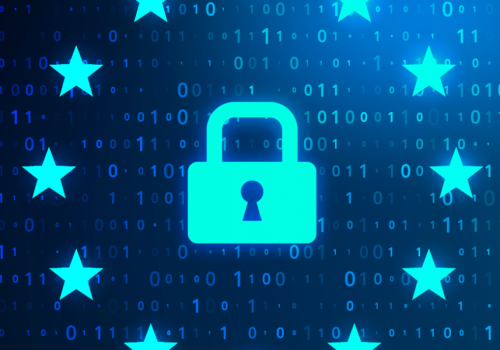The implementation of AI across industries brings forth significant regulatory challenges, particularly in the realms of data governance, bias mitigation, and cybersecurity. The differentiation between narrow AI and general AI (GAI) significantly impacts the approach organizations must take regarding compliance and governance throughout the various phases of AI adoption: development, testing, and deployment. Each of these phases entails distinct compliance measures, reflecting the nuanced nature of AI technologies and their applications.
Also differentiating between Narrow AI and General AI is crucial from a compliance perspective. The first one is designed to perform specific tasks with a defined scope and capabilities. Its limited and focused nature inherently simplifies the process of ensuring compliance and managing risks, as its applications and implications are more predictable and contained. This specificity is particularly advantageous during the development phase, where compliance efforts can be closely aligned with the AI’s intended function, significantly streamlining the process of adhering to relevant laws and regulations.
On the other hand, General AI aims to perform any intellectual task that a human being can, making it far more complex and unpredictable. This broad capability introduces significant challenges in compliance, especially during the development and testing phases, as the potential uses and impacts of GAI are vast and varied. Ensuring GAI’s adherence to all applicable regulations requires a more robust and flexible governance structure, capable of addressing the wide array of ethical, legal, and social implications that GAI presents.
Phases of AI Adoption and Compliance Measures
1. Development Phase
This initial stage involves designing and building the AI model.
For narrow AI, compliance measures focus on specific regulatory requirements relevant to the AI’s application area, such as privacy and data protection laws for personal data processing or industry-specific standards. Development teams can integrate compliance checkpoints and ethical considerations directly related to the AI’s intended use, facilitating a more streamlined and focused compliance process.
The data protection compliance steps are fairly easy to monitor: from incorporating data minimization principles to ensuring that only necessary data is collected and processed for the specific task.
Checking if personal data can be anonymized. These are some of the simplest and most straightforward steps one can take.
In contrast, developing GAI requires a broader consideration of compliance issues due to its wide-ranging potential applications. This may involve implementing a more dynamic and comprehensive governance framework to anticipate and address a wide spectrum of legal and ethical considerations, even before specific applications of the GAI are fully realized.
Ensuring compliance with GDPR during the collection, processing, and dissemination of personal data is paramount. Developing frameworks to identify and mitigate bias in AI algorithms becomes crucial in maintaining fairness and transparency. Moreover, cybersecurity threats like data poisoning pose serious risks to the integrity of AI models, necessitating robust security measures to protect data and maintain trust.

2. Testing Phase
Testing involves evaluating the AI’s performance and ensuring it meets the designated criteria without violating any compliance requirements. For narrow AI, testing can be closely tailored to the specific contexts in which the AI will operate, allowing for focused assessments of compliance with relevant regulations and ethical standards. For Narrow AI it is more probable to be able to replace personal data with synthetic data to test AI functionalities since its scope is clear and defined.
With GAI, testing must encompass a broader range of scenarios to evaluate compliance across potential applications. This might include extensive simulations and hypothetical use cases to uncover any potential compliance issues or ethical dilemmas that could arise in varied contexts. For example, in this situation, dynamic testing strategies that can adapt to the various potential uses of GAI, utilizing a mix of real, anonymized, and synthetic data to comprehensively assess privacy impacts, are welcomed.
3. Deployment Phase
The final stage is deploying the AI in a real-world environment. Narrow AI deployments can benefit from targeted compliance strategies, focusing on the specific regulatory and ethical considerations pertinent to the AI’s application.
For narrow AI, organizations can implement robust encryption and access control measures to protect personal data processed by the AI in its operational environment.
GAI deployments, however, must account for a much wider array of potential compliance challenges, given the vastness of potential applications. This requires a flexible and adaptable governance approach that can continuously monitor and address compliance issues as they emerge, ensuring that GAI remains within regulatory boundaries and ethical guidelines as it operates across diverse contexts. Hence, it is necessary for organizations to implement an adaptive monitoring system that can evolve with GAI’s applications, alongside regular and comprehensive audits to reassess and realign data protection measures as necessary.
In summary, the distinction between narrow AI and GAI necessitates different compliance measures across the phases of AI adoption, underscoring the importance of a tailored approach to governance. Narrow AI allows for a more focused and straightforward compliance strategy, while GAI demands a comprehensive and flexible governance framework capable of addressing a wide range of potential applications and implications. AI innovation must consider the existing legislative framework, notably GDPR, whenever personal data is involved in an AI model. It is vital that technological advancements also aim to protect fundamental rights and freedoms, including the right to privacy.
Best Compliance Practices Overseeing AI Implementation
In the process of supervising AI adoption, ensuring compliance involves more than just the technical aspects; it also encompasses ethical, legal, and governance factors. This approach underscores the necessity for a comprehensive strategy in AI deployment, one that balances technological effectiveness with adherence to ethical principles, legal requirements, and societal accountability. The following are essential tactics that organizations can employ to verify the compliance of their AI systems within the existing legal frameworks:
- Conduct a Human Rights Impact Assessment (HRIA): Ensure AI systems respect and uphold human rights, following a ‘human rights by design’ approach.
- Develop an Ethical AI Framework: Establish a framework that encompasses ethical principles, including fairness, transparency, and accountability. Ensure this framework guides all AI-related activities, especially in collaboration with external entities.
- Conduct Privacy Impact Assessments (PIA): Perform PIAs to identify and mitigate potential privacy risks before AI deployment. This practice is essential in maintaining data privacy and user trust.
- Data Minimization and Anonymization: Use the minimum necessary data for the AI system’s purpose and anonymize data wherever possible to reduce privacy risks.
- Transparency in Data Usage: Maintain transparency about AI system data usage. Clear communication with stakeholders about how data is used, stored, and protected is crucial for building trust and ensuring compliance.
- Adopt an Appropriate Governance Model: That aligns with your organization’s values, regulatory requirements, and the nature of the AI application.
- Detailed Documentation of AI Processes: Keep comprehensive records of all AI-related activities, including data sources, collection methods, and processing logic. This documentation is vital for transparency, accountability, and compliance.
- Regular Audits and Compliance Checks: Continuously audit AI systems to ensure they comply with privacy laws and ethical standards. This includes reviewing data storage, processing, and sharing practices.
- Implement Robust Data Security Measures: Protect AI systems from unauthorized access, breaches, and leaks through strong cybersecurity measures, including encryption and access controls.
- Employee Training and Awareness: Conduct training programs for staff involved in selecting, creating, testing, or implementing AI solutions. Ensure they understand the ethical, legal, and technical aspects of AI.
- Collaborative Development and Testing: Work closely with external entities during development and testing phases. Collaborative efforts ensure that AI systems are built according to both parties’ standards and objectives.
- Stakeholder Engagement: Engage with various stakeholders, including users, potentially affected communities, and industry experts, to gain insights and address concerns related to AI implementation.
- Monitoring and Evaluation: Set up metrics and KPIs to monitor and evaluate the effectiveness, compliance, and impact of the AI system regularly.

Key Participants in the AI Compliance Framework
AI risk and compliance assessment requires the involvement of multiple departments, reflecting AI’s multidisciplinary nature. When delving into the roles that various departments play in the assessment of AI risk and compliance, it becomes clear that managing AI responsibly demands collective input from across different segments of an organization.
At the forefront, the department initiating the AI project is of the highest importance. Whether it is marketing, finance, operations, or another area, this department sets the stage by outlining the specific applications and goals for the AI initiative, tailored to the unique requirements and structure of the organization. Equally critical is the role of the Data Protection Officer (DPO), particularly in entities that process considerable volumes of personal information.
The DPO’s role is to ensure adherence to the General Data Protection Regulation (GDPR) and other relevant data protection laws, thereby, aiding in the identification and mitigation of any privacy and data security risks.
The Chief Information Officer (CIO), or an equivalent figure in IT leadership, also plays a vital role. They are tasked with the oversight of all technological facets of the AI implementation, guaranteeing that these solutions are in harmony with the organization’s overall IT architecture and strategic direction.
The technical team, encompassing AI and machine learning specialists, data scientists, and IT experts, is responsible for the crafting, rollout, and ongoing upkeep of AI systems. Their expertise is crucial in ensuring the reliability, security, and effectiveness of these systems.
Furthermore, the governance or risk management team holds a key position. This team is charged with the oversight of AI’s wider ramifications, including ethical considerations, regulatory compliance, and the congruence of AI initiatives with the organization’s core principles and policies.
In essence, the process of AI risk and compliance evaluation is a collaborative endeavor involving a varied and interdisciplinary team. This team functions as a dynamic force, guaranteeing that AI deployments are not only technologically proficient but also ethically sound, regulatory compliant, and aligned with the strategic objectives and ethical standards of the organization.
Such a holistic strategy is indispensable for leveraging AI’s advantages while effectively navigating its potential risks.
Recent Development of the AI Act
The recent advancements in the AI Act have led to the unveiling of the final version of the first legal framework dedicated to AI. Notably, the inclusion of Recital 5aa in the adopted text provides crucial clarification. It states that the EU AI Act is not intended to interfere with the application of existing Union laws that regulate personal data processing, including the roles and authorities of independent supervisory bodies tasked with ensuring adherence to these regulations. Furthermore, the AI Act does not alter the responsibilities of AI system providers and deployers acting as data controllers or processors under either national or Union data protection laws, especially in contexts where the design, development, or utilization of AI systems entails processing personal data.
In essence, for AI providers and deployers who handle personal data, compliance with the General Data Protection Regulation (GDPR) and the broader array of the EU data protection and privacy legislation forms the foundational layer of regulatory obligations.
The AI Act introduces additional requirements that build upon this foundational compliance framework.

Conclusion
Innovation and compliance should not be viewed as mutually exclusive. Innovation does not have to happen rapidly, universally across all industries, or evenly throughout all business processes. It is crucial to remember this.
I believe it is feasible for companies to successfully adopt AI innovation while respecting current legislation, but this requires a well-crafted strategy. This involves allocating internal human and financial resources, upskilling the existing workforce, and implementing a comprehensive adoption plan. The balance between AI innovation and compliance with data protection and privacy is not mutually exclusive. Strategic planning, respect for legal frameworks, and ethical considerations enable businesses to innovate responsibly.
Start small by adopting a phased approach, conduct regular audits, and engage in stakeholder feedback, this is how organizations can integrate AI into their processes without compromising compliance or privacy.









